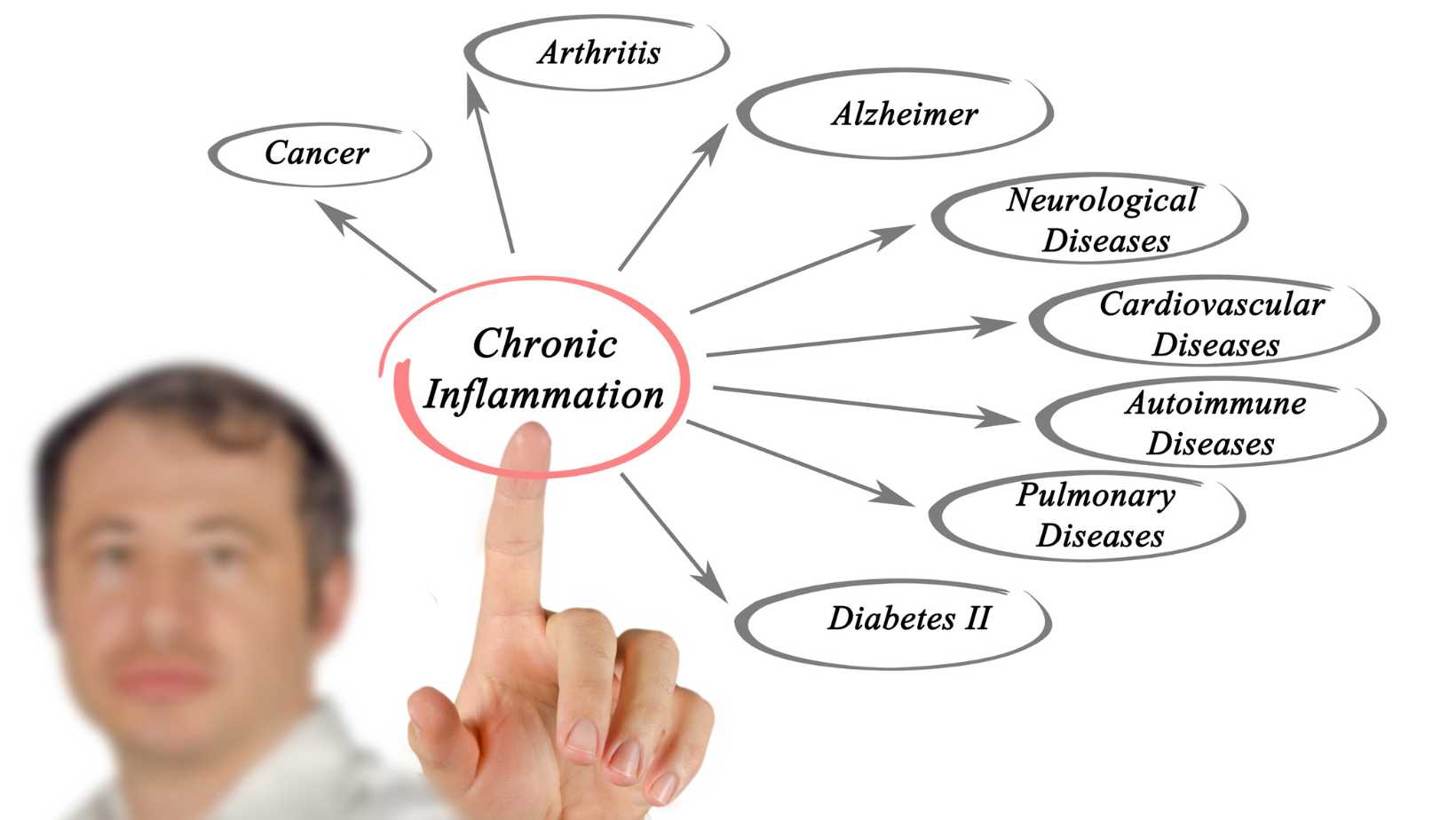Inflammation Unveiled: The Hidden Driver of Modern Disease
In a world where we’ve seemingly conquered many acute illnesses, a more insidious health threat lurks beneath the surface. Chronic inflammation, once a footnote in medical textbooks, is now recognized as a major contributor to almost every known disease of aging. But what’s causing this inflammatory surge, and more importantly, how can we combat it?
The Inflammation Paradox
Inflammation isn’t inherently bad. It’s a crucial part of our body’s defense mechanism, helping us heal from injuries and fight off infections. However, when inflammation becomes chronic, it transforms from protector to destroyer.
Acute vs. Chronic Inflammation
- Acute: Short-term response to injury or infection
- Chronic: Persistent, low-grade inflammation throughout the body
The Modern Inflammation Triggers
Our modern lifestyle has created a perfect storm for chronic inflammation. The top culprits include:
1. The Sugar Surge
The average American consumes a staggering 152 pounds of sugar and 133 pounds of flour annually. This sugar overload, particularly high-fructose corn syrup, is a primary driver of inflammation.
2. Sedentary Lifestyles
Lack of physical activity isn’t just bad for your waistline; it’s pro-inflammatory. Regular exercise acts as a powerful anti-inflammatory.
3. Chronic Stress
The constant pressure of modern life keeps our stress response activated, leading to sustained inflammation.
4. Environmental Toxins
From pesticides to heavy metals, our bodies are constantly bombarded with inflammatory agents.
5. Gut Microbiome Imbalance
The trillions of bacteria in our gut play a crucial role in regulating inflammation. Disruptions to this delicate ecosystem can have far-reaching consequences.
The Inflammation-Disease Connection
Chronic inflammation has been linked to a host of serious health conditions:
- Heart disease
- Cancer
- Diabetes
- Alzheimer’s disease
- Autoimmune disorders
- Depression and anxiety
Measuring the Fire Within
Detecting chronic inflammation isn’t always straightforward, but certain tests can provide insights:
C-Reactive Protein (CRP)
This blood test is the most common marker for inflammation. Ideally, levels should be below 1 mg/L.
The Immune Age Test
A cutting-edge test developed at Stanford University, this measures 50 different cytokines to assess your “immune age” and inflammation risk.
Beyond the Band-Aid: A Functional Approach
Traditional medicine often focuses on suppressing inflammation with drugs. While these can be necessary in acute situations, they don’t address the root causes of chronic inflammation. Enter functional medicine, which seeks to identify and eliminate the sources of inflammation.
The TACK Rule
Functional medicine follows the TACK principle: If you’re standing on a tack, you need to remove it, not just take painkillers. Similarly, we need to identify and remove the “tacks” causing inflammation in our bodies.
Building an Anti-Inflammatory Lifestyle
Combating chronic inflammation requires a multi-faceted approach:
1. Eat Real, Whole Foods
Focus on colorful fruits and vegetables rich in anti-inflammatory phytonutrients. Minimize processed foods, sugar, and refined carbohydrates.
2. Embrace Healthy Fats
Incorporate omega-3 rich foods like wild salmon, sardines, and walnuts. Use extra virgin olive oil as your primary cooking oil.
3. Move Your Body
Regular, moderate exercise is a powerful anti-inflammatory. Aim for at least 30 minutes of activity most days of the week.
4. Manage Stress
Incorporate stress-reduction techniques like meditation, yoga, or deep breathing into your daily routine.
5. Heal Your Gut
Support your microbiome with probiotic-rich foods and consider a targeted gut repair program if needed.
6. Consider Supplements
A high-quality multivitamin, fish oil, and vitamin D can help support an anti-inflammatory state.
The Bottom Line: Inflammation as a Vital Sign
As we uncover the far-reaching impacts of chronic inflammation, it’s becoming clear that managing inflammation is as crucial to our health as maintaining a healthy blood pressure or cholesterol level. By understanding the sources of inflammation in our lives and taking steps to mitigate them, we can potentially prevent or reverse a wide range of chronic diseases.
Action Steps for Taming Inflammation
- Get your CRP levels tested to assess your current inflammatory state
- Keep a food diary to identify potential inflammatory triggers in your diet
- Implement a 30-day anti-inflammatory diet plan, eliminating common triggers like sugar, processed foods, and potential allergens
- Establish a consistent sleep schedule to support your body’s natural anti-inflammatory processes
- Incorporate stress-reduction techniques into your daily routine
FAQ: Understanding and Managing Inflammation
Q: Can inflammation be completely eliminated?
A: The goal isn’t to eliminate inflammation entirely, as some inflammation is necessary for healing. Instead, we aim to reduce chronic, low-grade inflammation to healthy levels.
Q: How quickly can dietary changes impact inflammation levels?
A: Some people report feeling better within days of adopting an anti-inflammatory diet. However, measurable changes in inflammatory markers typically take several weeks to months.
Q: Are anti-inflammatory supplements as effective as dietary changes?
A: While certain supplements can be helpful, they’re most effective when combined with a comprehensive anti-inflammatory lifestyle. Diet and lifestyle changes should be the foundation of any anti-inflammatory approach.
As we continue to unravel the complex web of chronic inflammation, one thing becomes clear: our daily choices have a profound impact on our long-term health. By recognizing inflammation as a critical health indicator and taking proactive steps to manage it, we open the door to potentially preventing or reversing a wide range of chronic diseases. The power to quench the inflammatory fire within lies largely in our own hands – through the foods we eat, the way we move, and how we manage the stresses of modern life.
